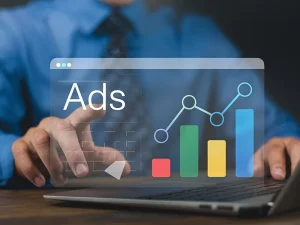In a world saturated with glitzy advertisements and celebrity endorsements, consumers are craving something real—something they can trust. Enter micro-influencers: the unsung heroes of modern marketing. With their genuine connections and relatable content, these everyday influencers are reshaping how brands engage with audiences. In this blog post, we’ll explore how tapping into the power of micro-influencers can unlock authenticity in your marketing strategy, helping you build deeper relationships with customers and drive meaningful results. Get ready to discover why less is often more when it comes to influence!
Introduction to the concept of micro-influencers
In today’s digital landscape, the term ‘influencer’ has evolved. Gone are the days when only celebrities held sway over consumer choices. Enter micro-influencers—individuals with smaller but highly engaged followings who foster genuine connections with their audience. These everyday voices are reshaping marketing strategies and redefining authenticity in brand partnerships.
Micro-influencers may not boast millions of followers, but what they lack in quantity, they more than make up for in quality. Their niche expertise often translates into an authentic relationship with their audience—a bond that larger influencers sometimes struggle to achieve. As brands seek new ways to cut through the noise and connect meaningfully with consumers, embracing these relatable figures can unlock powerful opportunities.
Why should your brand care? Because today’s consumers crave authenticity more than ever before. They want recommendations from people who feel real and relatable—not just polished ads or distant celebrities promoting products without a second thought. In this article, we’ll explore how micro-influencers can be a game changer for your marketing strategy and why tapping into their unique power is essential for creating impactful campaigns that resonate deeply with your target audience.
Understanding the difference between macro and micro-influencers
When diving into the realm of influencer marketing, it’s crucial to distinguish between macro and micro-influencers.
Macro-influencers often boast follower counts in the hundreds of thousands or even millions. Their broad reach can be appealing, but engagement rates sometimes suffer due to their vast audience. Followers may feel more like spectators than a community.
On the other hand, micro-influencers typically have between 1,000 to 100,000 followers. They cultivate niche audiences with whom they interact closely. This fosters a sense of authenticity and trust that larger influencers might lack.
Brands looking for genuine connections often find success with micro-influencers. Their ability to engage deeply resonates with targeted demographics. With less noise in their feeds, followers are more likely to pay attention and act on recommendations from these smaller voices in the digital space.
The impact of authenticity in influencer marketing
Authenticity has become a cornerstone of influencer marketing. Consumers are increasingly savvy and can quickly spot inauthenticity. This awareness makes genuine connections more valuable than ever.
When influencers share their honest opinions, they foster trust with their audience. Followers feel like they’re receiving advice from a friend rather than a sales pitch. This bond leads to higher engagement rates and stronger brand loyalty.
Brands that embrace authentic partnerships often see improved results. When micro-influencers align closely with their values, the message resonates better with potential customers.
Moreover, authenticity transcends follower counts. It’s about relatability and real experiences rather than polished images or scripted endorsements. Campaigns infused with this sincerity tend to yield positive word-of-mouth promotion too—an invaluable asset in today’s digital landscape.
As brands navigate the sea of options available for collaborations, those who prioritize authenticity stand out among competitors.
Benefits of collaborating with micro-influencers for your brand
Collaborating with micro-influencers offers brands a unique advantage. These influencers typically have smaller, yet highly engaged audiences. This means your message reaches people who are genuinely interested in the content.
Micro-influencers often foster a more personal connection with their followers. Their authenticity builds trust, making recommendations feel less like marketing and more like friendly advice.
Additionally, working with these influencers can be cost-effective. Brands can achieve significant reach without breaking the bank on high-profile endorsements.
The niche expertise of micro-influencers also enhances targeting efforts. They cater to specific interests or demographics that align closely with your brand’s vision.
This tailored approach not only boosts engagement but also encourages meaningful interactions. When audiences see relatable faces endorsing products, they’re more likely to convert into loyal customers.
How to identify and approach the right micro-influencers for your target audience
Identifying the right micro-influencers starts with understanding your target audience. Know their interests, preferences, and online behaviors. This insight helps you find influencers who resonate with them.
Next, use social media platforms to research potential candidates. Look for individuals with 1,000 to 100,000 followers who engage consistently with their audience. Check engagement rates—likes and comments will often reveal authenticity over sheer follower count.
Examine content style too. Ensure it aligns with your brand’s voice and values. Authenticity is vital in influencer partnerships.
Once you’ve pinpointed suitable influencers, approach them genuinely. Personalize your outreach message by mentioning specific posts or qualities that attracted you to them. Show how a collaboration could benefit both sides.
Building relationships takes time; be ready to invest in nurturing these connections for long-term success.
Successful case studies of brands who have leveraged micro-influencers in their marketing strategy
Glossier turned to micro-influencers to build its brand from the ground up. By collaborating with everyday beauty enthusiasts, they created a community that felt genuine and relatable. The result? A loyal customer base that swears by their products.
Nike embraced micro-influencers during the launch of their new sneaker line. Partnering with fitness coaches on social media platforms allowed them to reach niche audiences who shared authentic reviews. This sparked organic conversations around the brand, enhancing credibility.
A food startup found success through local food bloggers who had smaller yet dedicated followings. Their honest endorsements resulted in increased foot traffic and sales at pop-up events, showcasing how authenticity can drive real-world engagement.
These examples illustrate how brands across various sectors are harnessing the power of micro-influencers for impactful marketing campaigns tailored to specific audiences.
Tips for creating effective partnerships with micro-influencers
Building strong partnerships with micro-influencers requires a thoughtful approach. Start by establishing clear communication. Share your brand values and campaign goals openly.
Next, focus on authenticity. Allow influencers the creative freedom to represent your product in their unique style. This will resonate more with their audience.
Consider offering exclusive perks or products as part of the collaboration. It creates excitement and incentivizes genuine promotion.
Be open to feedback throughout the partnership process. Influencers know their audience best and can provide valuable insights that enhance your strategy.
Lastly, cultivate long-term relationships rather than one-off collaborations. Nurtured connections create trust, leading to even stronger advocacy for your brand over time.
Measuring ROI from working with micro-influencers
Measuring ROI from micro-influencer collaborations can be straightforward yet nuanced. Start by defining clear objectives for your campaign. Are you focused on brand awareness, engagement, or direct sales?
Next, utilize tracking tools and analytics to monitor performance metrics. These may include reach, impressions, clicks, and conversions. Each metric provides insights into how effectively the influencer is resonating with their audience.
Engagement rates are particularly telling; they reveal how authentic interactions are between the influencer and their followers. A high level of interaction often translates to stronger consumer trust.
Additionally, consider qualitative feedback. Comments and sentiments from consumers can offer a deeper understanding of the campaign’s impact on brand perception.
Finally, always compare results against your predetermined goals to assess success comprehensively. This multidimensional approach helps ensure that you derive meaningful insights from each collaboration.
Conclusion: Why including micro-influencers in your marketing strategy is a must for authentic and impactful campaigns.
Micro-influencers are changing the landscape of influencer marketing. Their genuine connections with audiences create a level of trust that larger influencers often struggle to achieve. Brands can tap into this authenticity to foster deeper relationships with potential customers.
Leveraging micro-influencers allows brands to reach niche markets effectively. These influencers typically have highly engaged followers who value their opinions, making them ideal partners for targeted campaigns.
Moreover, collaboration with micro-influencers tends to be more cost-effective than working with macro-influencers or celebrities. This opens doors for businesses of all sizes to harness the power of influencer marketing without breaking the bank.
Choosing the right micro-influencer means aligning brand values and understanding audience demographics. When collaborations feel natural and authentic, they resonate more deeply with consumers.
Successful case studies illustrate how brands have seen significant returns by integrating micro-influencers into their strategies. Metrics like engagement rates and conversion tracking show tangible results from these partnerships.
Effective communication and clear expectations are key when building relationships with micro-influencers. A well-structured partnership can lead not only to successful campaigns but also long-term brand advocates who genuinely support your vision.
Measuring ROI is crucial in determining the success of these collaborations, allowing brands to refine their strategies over time based on data-driven insights.
Incorporating micro-influencers into your marketing strategy isn’t just an option; it’s becoming essential for creating authentic connections that drive meaningful engagement and impact in today’s crowded market space.






